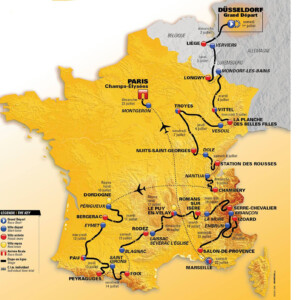The Frontier is the first wearable tech connected helmet from Coros.
At first glance the helmet looks reasonable, an aero styled unit with 15 vents, perhaps with a slightly protruding brow. The silver and white colourway on review (there’s also a blue and black) has a high gloss finish and you might guess it comes from the ranks of one of the big names in helmet manufacture.
The Coros’ Straps are fairly standard, easily adjusted, secure and comfortable. The rear tensioning dial enable a secure fit and there are padding options in the box to customise your fit.
Safety should be the primary function of a helmet and so it is with the Coros. The helmets are Australian Standards certified with a polycarbonate shell bonded to the EPS casing.
The Coros has a Bluetooth connected sound system embedded in the EPS shell. The system allows you to connect to your smart phone and stream music, hear directions from mapping apps, or even take phone calls. There is a pair of small speakers to provide sound to each ear and a small wind protected microphone in the forehead of the helmet that picks up your voice quite effectively so your caller can hear your voice well.
Functionality of the system is controlled via a small remote ‘o-ringed’ to your handlebars with control over volume, skip, pause, pickup, and hangup . There’s a walkie talkie function in the works (it will be an optional extra) that will shortly allow you to link with, and talk to your mates in the bunch should they also have a Coros. The battery lasts for around 10 hours and recharging is via USB.
While I’m not a fan of in-ear or over-ear headphones used while cycling for safety reasons, the Coros has a different approach. It uses bone conduction speakers located on the straps and positioned over your cheekbones on both sides are an innovative approach to sound transmission. In effect these large buttons (about the size of a 20c piece and 15mm deep) send sound via contact with your skull to your ears. I had imagined the sound would be quite muted, possibly even muffled with very poor treble response. In use I was pleasantly surprised on two fronts. The sound including treble is quite clear, but not only that, the music and other sounds you hear through the system don’t drown out other ambient sound. People talking to you, the sound of cars approaching, your gears and tyres are all clearly heard. It’s as if the speakers deliver sound direct into your head, bypassing your ears. It seems quite high tech but in fact the technology has been used in hearing aids and other applications for some time.
Overall, the technical electronic functionality of the Coros performed very well, sound both transmitted and received is heard quite clearly. However all the tech in the Coros does bring a significant burden of mass with this large size unit registering a mass of 422g. The extra 175 grams above the weight of my regular lid is not a lot in the scheme of my bodyweight plus bike, but when its strapped to your head, you certainly notice it.
Given personal acceptance of styling and colour aesthetics, the real question the Coros begs is do you want the ability to stay seamlessly connected on your bike? Do you want or need to be taking calls, listening to music, taking directions, hearing Live Strava comments while out on your bike? Personally I find the escape from tech one of the simple pleasures that riding my bike affords, but I can see that some will undoubtedly answer this with a resounding yes appreciating the ability to be contactable by their partner, kids or work.
Specifications
RRP: $249
Weight: 422g
Distributor: www.iico.com.au


